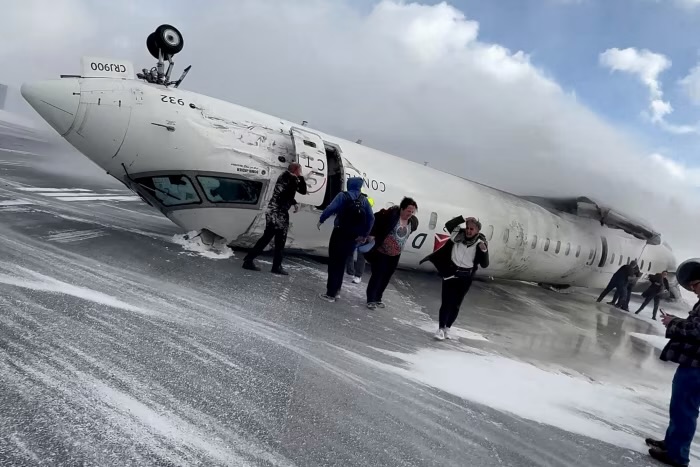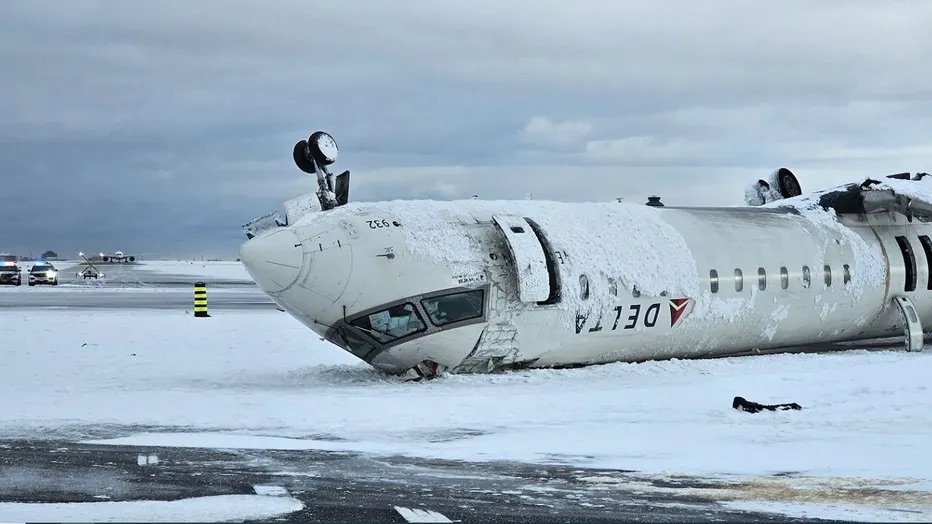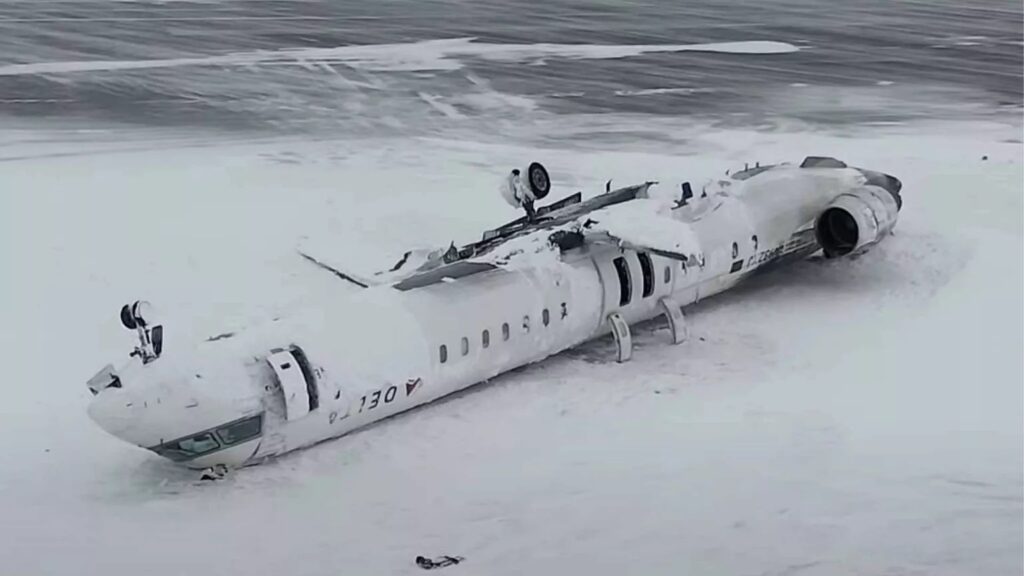
Despite the plane skidding down the runway at over 100 mph, flipping over and losing a wing, all 80 people onboard walked away with minimal injuries.
ABC News spoke with aviation experts who pointed to three key elements that begin to explain how the passengers survived the crash: the plane’s landing gear, its wing and its fuselage.

The regional jet was a Canadian-built Bombardier CRJ-900. Experts described the 16-year-old narrow-body plane as a workhorse plane for flights between midsized cities.
Delta Flight 4819, traveling from Minneapolis to Toronto, was operated by Endeavor Air. Chris Finlayson used to fly that route for Endeavor.
“When you come into land and then you roll out, it’s very easy to end up pulling the nose a little bit too high,” Finlayson said, adding that angling the plane too high can cause “motion where you end up driving your main landing gear into the runway.”
Brian Erickson, one of the 76 passengers, described experiencing a particularly hard landing, something experts say could have caused the collapse of the CRJ-900’s right landing gear.
“When we hit down, it seemed like we hit pretty hard. And I thought, ‘OK, this is a pretty rough landing, but I’ve had that before.’ And then all of a sudden, the plane started listing and turning to the right,” he said.
John Nance, an ABC News aviation analyst who examined video of the landing, said that the angle of the landing placed stress on the right landing gear, potentially contributing to its collapse.
“The impact on the right main gear has driven the gear past its limitations, and in the vernacular, it’s driven the gear up through the wing,” Nance said.

‘I was hanging by the seat belt’
As the plane slowed to a stop, passengers found themselves hanging upside-down in the cabin. They were locked in place thanks to modern seats and belts that can withstand the force of the crash, experts said.
“I was hanging by the seat belt, which are very sturdy because I’m not a little fella. And, you know, everybody was helping their neighbor,” said Erickson.
The final factor that saved the lives of DL4819’s passengers was likely its well-trained crew and the fast response from airport firefighters, experts said.
“When you have something that is so abnormal and so outside of what your psyche can kind of deal with, you go to your foundational knowledge,” explained Finlayson. “And that’s what that’s what you do as an airline employee, you have a strong foundational knowledge, so that way when emergencies happen, you just go to your instinct, and your instincts are to get people out safely.”
Many passengers reported the intense smell of jet fuel in the cabin. However, by 2:21 p.m. – less than 10 minutes after the crash landing – every passenger and crew member safely exited the plane, escaping before the fuel reignited.
The Transportation Safety Board of Canada is beginning to uncover clues about the cause of the crash, though the investigation will likely take months to complete.
